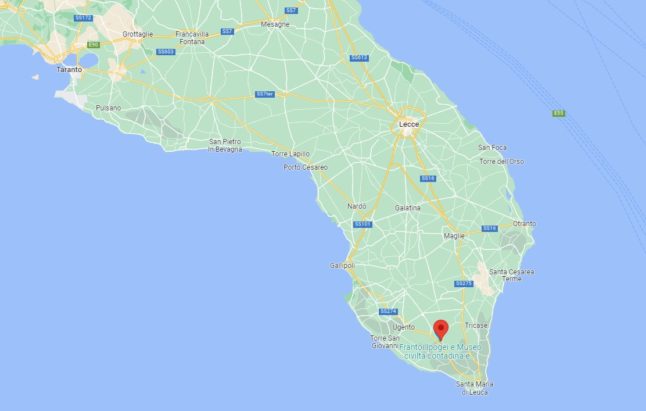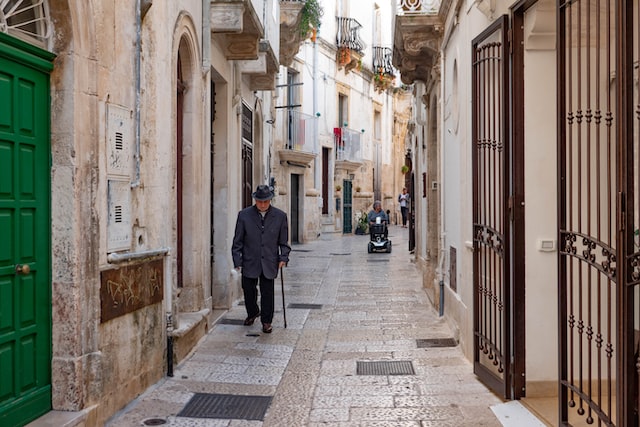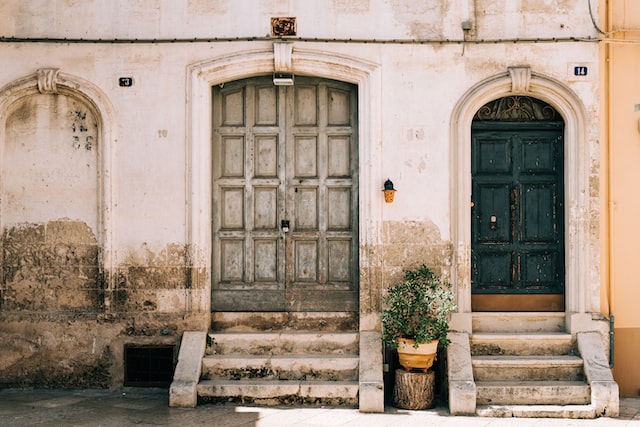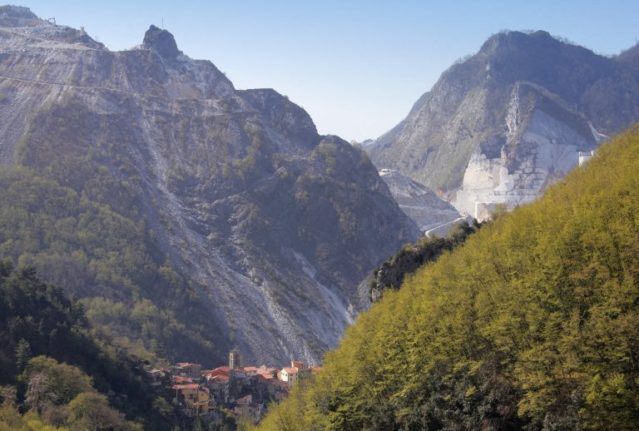Another town in southern Italy has joined a long list of depopulated areas which are trying to offload old, unwanted houses at bargain prices and offering cash incentives to new residents.
The municipality of Presicce-Acquarica, which is made up of two adjoining villages, has announced it will soon offer grants worth up to €30,000 to those willing to relocate there.
READ ALSO: The cheap Italian properties buyers are choosing instead of one-euro homes
No doubt the offer will be tempting to anyone who has visited the sunny Salento area, in Italy’s south-eastern Puglia region.
Salento sits right at the bottom of the peninsula that forms the heel of the Italian ‘boot’. It’s a highly popular summer tourist destination known for scorching temperatures, sprawling olive groves, whitewashed houses and long coastlines dotted with wild, pristine beaches.
With its famously abundant local produce, warm climate and authentic, traditional feel, Puglia (and Salento in particular) is an increasingly popular destination for foreign second-home buyers as well as holidaymakers.

But the newly-announced incentives are aimed more at those who would become full-time residents, as the council hopes to attract young families and people planning to start a business.
Those moving to the villages of Presicce or Acquarica must be willing to invest in an older property in the area, and the council says it will subsidise 50 percent of the cost of a property purchase and any renovation work up to a maximum of €30,000.
READ ALSO: Why Italians aren’t snatching up their country’s one-euro homes
Houses for sale as part of the deal are reportedly priced from around 500 euros per square metre, meaning you could buy a 50-square-metre property at around €25,000.
Like other cheap or one-euro homes on sale across Italy, the eligible properties have long been abandoned and are likely to need significant renovation work.

To be eligible for the grant, the council says individuals or families must move their official residency to the town – which would require being a full-time resident in Italy, to begin with, something which could prove problematic for those who would need a visa, or who only want to spend part of the year in Italy.
And buyers would have to be sure about their decision, as the town hall is expecting them to stick around.
“The maximum sum of 30,000 euros is envisaged only if the buyer decides to move their residence for at least 10 years after the purchase,” Mayor Paolo Rizzo said, according to newspaper Corriere della Sera.
The municipal council has already launched several incentives to attract new residents, including tax breaks for business start-ups and ‘baby bonuses’ for families with children.
After just 60 births compared to 150 deaths last year, the town hall says it will also grant new resident families €1,000 for every baby born there.
READ ALSO:
- Can second-home owners get an Italian residence permit?
- How to avoid hidden traps when buying an old property in Italy
- Charming or boring – What do Italians think of life in the old town?
The municipality now has around 9,000 residents, around half of whom live in the old town, where the properties for sale are located.
But attracting new families to this sleepy area may prove a considerable challenge: like many other parts of Italy trying to reverse population decline with generous-sounding incentives, Puglia’s villages often have little public transport infrastructure, scarce public services, and limited employment opportunities.

Perhaps the council is relying on the area’s outstanding beauty to tempt new residents: Presicce-Acquarica is designated as one of Italy’s ‘most beautiful’ villages, with a historic centre filled with ornate churches and Baroque palazzi.
The town is nicknamed the “city of green gold” due to the high quality of the oil from the surrounding olive groves, and it’s only a short drive from the Ionian Sea and the popular tourist destinations of Gallipoli and Santa Maria di Leuca.
The full details of the scheme and application process have however not been finalised yet, and will be published on the town hall’s website in the coming weeks, according to Italian media reports.



 Please whitelist us to continue reading.
Please whitelist us to continue reading.
I am an American based in Rome and have owned a house in sleepy Presicce for 20 years. The onslaught of friends who forwarded the articles about the latest scheme to attract new residents was astonishing. Presicce is a wonderful place as a second home, but living there as a full time resident would be a challenge. The richness of the olive oil is mentioned as part of what makes the village so renowned- too bad the punteruolo rosso has infested 90% of the groves throughout Salento and little progress has been made to eradicate the problem or even contain it as it spreads beyond Lecce towards Brindisi. Apparently not all strains of olive trees are affected by the pest, but after nearly a decade I sadly see little replanting with young, healthy, unaffected trees. It used to be olives as far as the eye could see, but is now vast hectares of what appears to be a petrified, desolate landscape. Needless to say, I bring my olive oil with me when relocating for the summer, I can’t imagine the amount of pesticides used on the few still fertile groves. Maybe new residents in the area will take up the cause and elicit some real action.